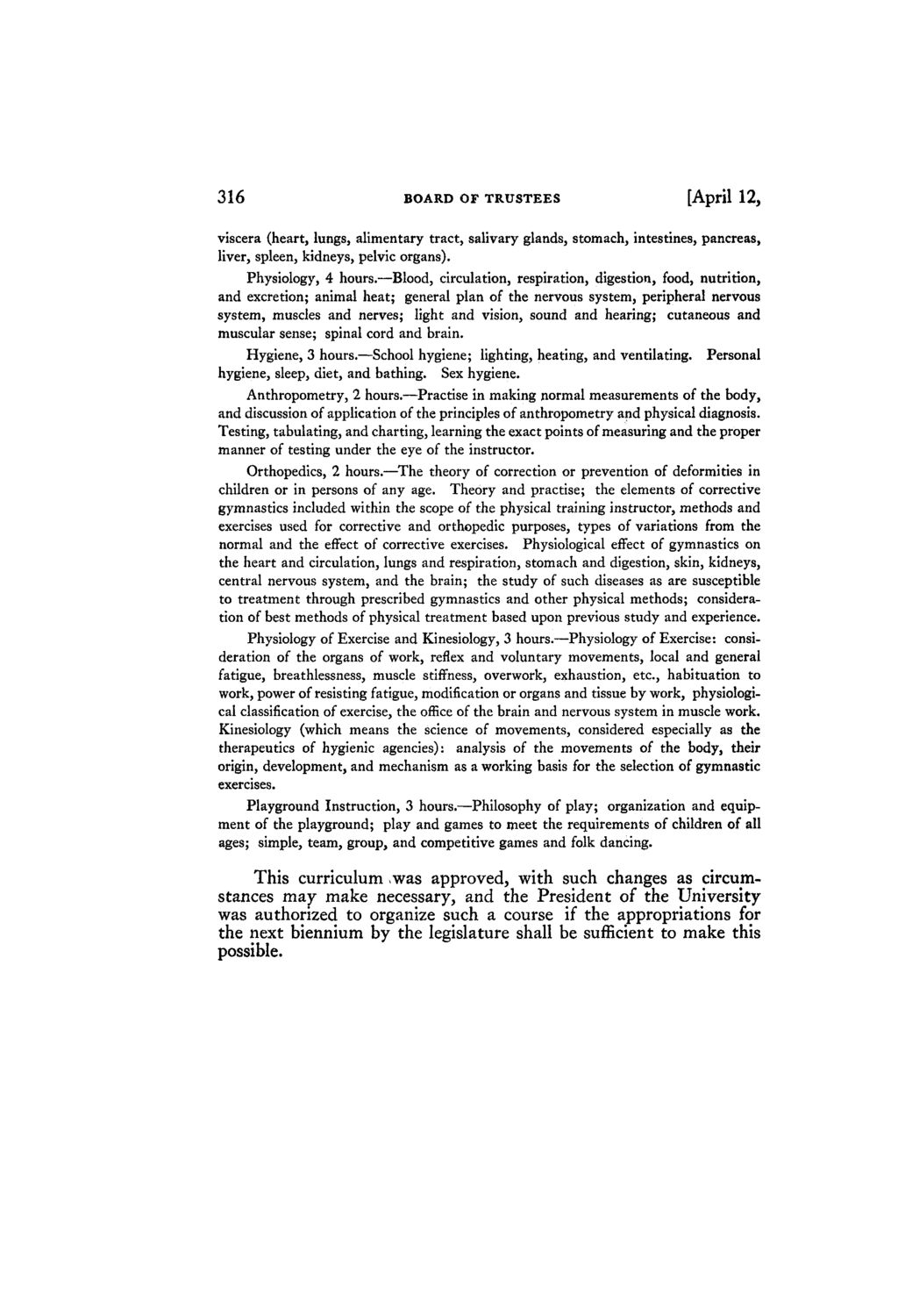| |
| |
Caption: Board of Trustees Minutes - 1920
This is a reduced-resolution page image for fast online browsing.

EXTRACTED TEXT FROM PAGE:
316 BOARD OF TRUSTEES [April 12, viscera (heart, lungs, alimentary tract, salivary glands, stomach, intestines, pancreas, liver, spleen, kidneys, pelvic organs). Physiology, 4 hours.—Blood, circulation, respiration, digestion, food, nutrition, and excretion; animal heat; general plan of the nervous system, peripheral nervous system, muscles and nerves; light and vision, sound and hearing; cutaneous and muscular sense; spinal cord and brain. Hygiene, 3 hours.—School hygiene; lighting, heating, and ventilating. Personal hygiene, sleep, diet, and bathing. Sex hygiene. Anthropometry, 2 hours.—Practise in making normal measurements of the body, and discussion of application of the principles of anthropometry and physical diagnosis. Testing, tabulating, and charting, learning the exact points of measuring and the proper manner of testing under the eye of the instructor. Orthopedics, 2 hours.—The theory of correction or prevention of deformities in children or in persons of any age. Theory and practise; the elements of corrective gymnastics included within the scope of the physical training instructor, methods and exercises used for corrective and orthopedic purposes, types of variations from the normal and the effect of corrective exercises. Physiological effect of gymnastics on the heart and circulation, lungs and respiration, stomach and digestion, skin, kidneys, central nervous system, and the brain; the study of such diseases as are susceptible to treatment through prescribed gymnastics and other physical methods; consideration of best methods of physical treatment based upon previous study and experience. Physiology of Exercise and Kinesiology, 3 hours.—Physiology of Exercise: consideration of the organs of work, reflex and voluntary movements, local and general fatigue, breathlessness, muscle stiffness, overwork, exhaustion, etc., habituation to work, power of resisting fatigue, modification or organs and tissue by work, physiological classification of exercise, the office of the brain and nervous system in muscle work. Kinesiology (which means the science of movements, considered especially as the therapeutics of hygienic agencies): analysis of the movements of the body, their origin, development, and mechanism as a working basis for the selection of gymnastic exercises. Playground Instruction, 3 hours.—Philosophy of play; organization and equipment of the playground; play and games to meet the requirements of children of all ages; simple, team, group, and competitive games and folk dancing. This curriculum was approved, with such changes as circumstances may make necessary, and the President of the University was authorized to organize such a course if the appropriations for the next biennium by the legislature shall be sufficient to make this possible.
| |